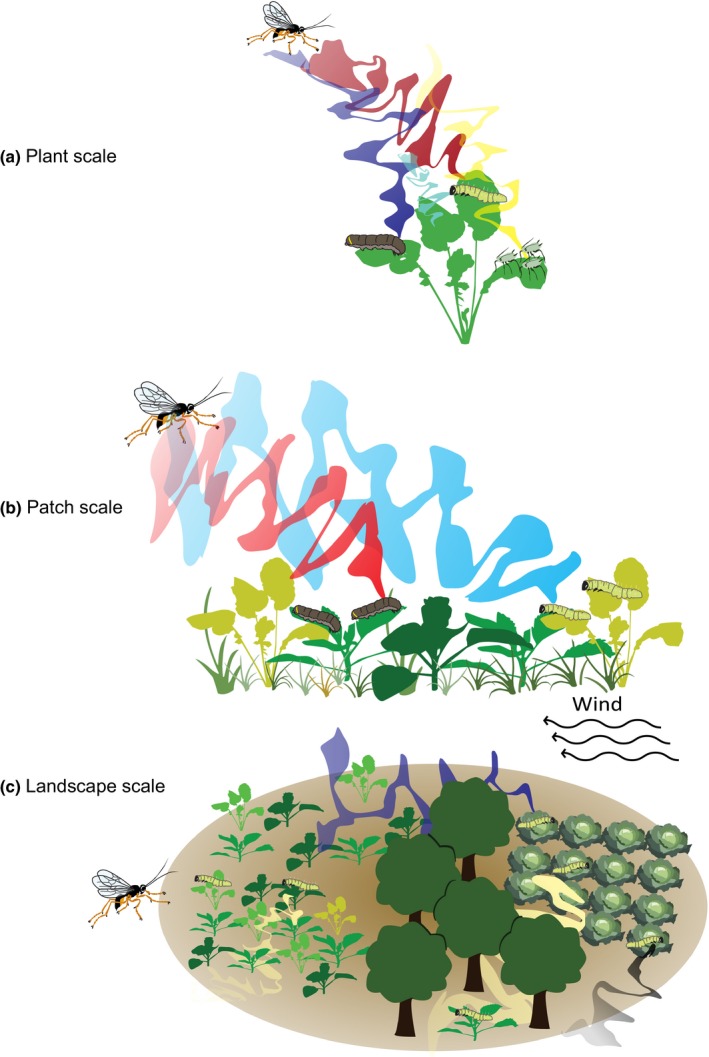Figure 3.

Herbivore‐induced plant volatiles (HIPVs) on multiple spatial scales. (a) A plant can respond to herbivory with the production of HIPVs. The composition of these volatile blends is affected by many on‐plant factors, such as herbivore identity, herbivore feeding guild, herbivore community and plant species or traits. Parasitoid responses may vary with variation in HIPV blends. (b) In nature, the plant is part of a larger community of plants and their associated herbivores. Therefore, parasitoids search for their hosts in patches where a large variety of odour plumes shapes the information on presence of the host, representing a dynamic volatile mosaic. (c) At the landscape scale, different habitats can present different volatile mosaics and distance between these habitats becomes important. Landscape structure as determined by openness of the vegetation and plant diversity, as well as weather conditions such as wind direction, affect how far odour plumes travel. The ability of the parasitoid to perceive HIPVs emanating from patches further away and to move across these habitats influences movement patterns and resulting population distribution.
